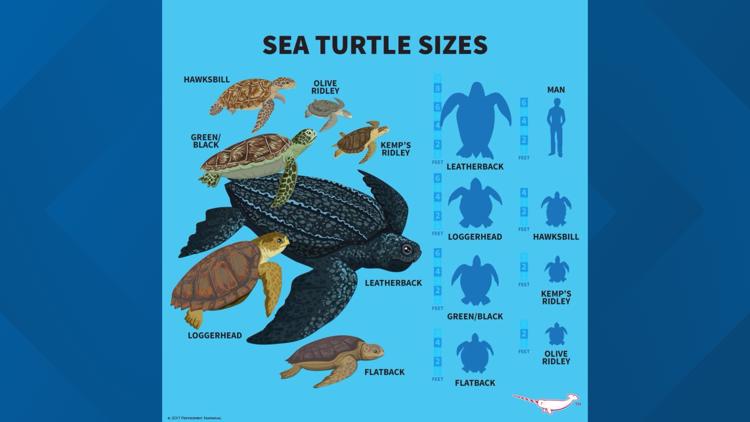CORPUS CHRISTI, Texas — As sea turtle nesting season continues on the Texas coast, we thought it would be a good time to explain the differences in the species that are commonly found on the Texas coast, with help from the knowledgeable staff at the Padre Island National Seashore (PINS).
The Gulf of Mexico is home to five of the seven sea turtle species; loggerhead, green, hawksbill, Kemp’s Ridley, and leatherback.
Kemp's ridley
The Kemp's ridley is the smallest of all the sea turtles, and also the most endangered. Kemp's ridley sea turtles grow to 27-32 inches (68 to 82 cm) long and weigh on average 75-100 pounds (33 to 45 kg).
Since 1970, the PINS has become a secondary nesting ground and helps safeguard the Kemp's ridley from extinction. Though visitors won't experience an "en masse" arribada, they might get lucky enough to catch a glimpse of one or two nests, seashore officials said.
They prefer open ocean and gulf waters with the females only coming ashore to lay eggs in beach sand. Hatchlings are charcoal gray; adults are olive green above and yellow below.
Did you know? Kemp's ridley sea turtles are the official state turtle of Texas.

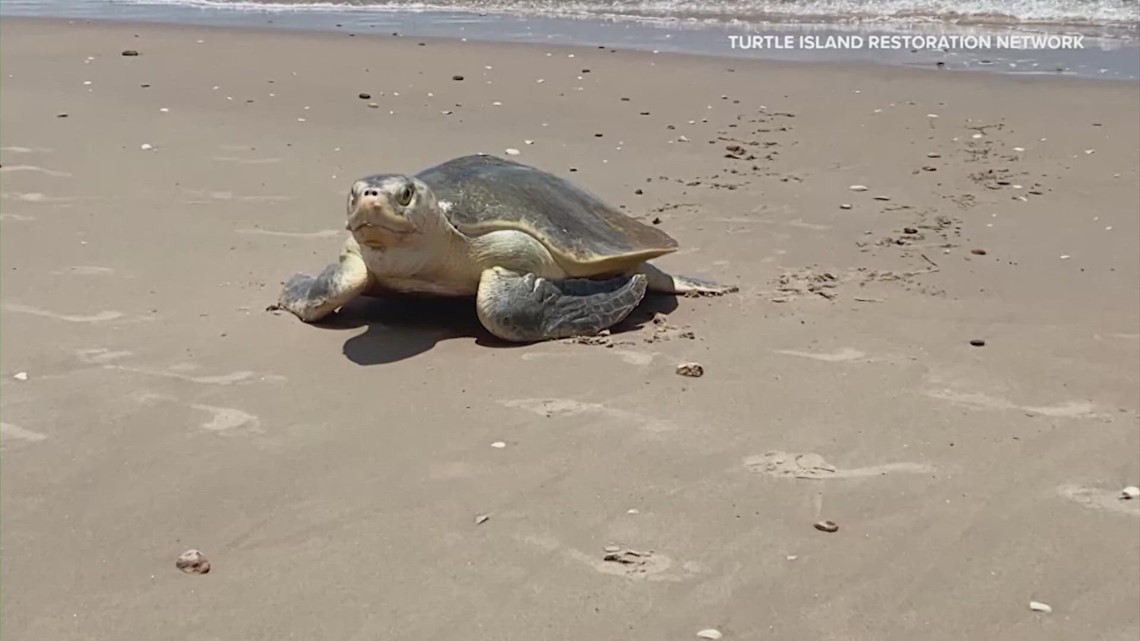
Green
The green sea turtle is the most common sea turtle in Texas and PINS is particularly important to its survival, seashore officials said. They are currently designated as Endangered.
Green sea turtles have a yellowish green body with dark spots on their head and flippers. Their shell is dark brown or olive colored and up to 55 inches long. Green sea turtles can grow to weigh 850 pounds. Green sea turtles can live from 30 - 50 years.

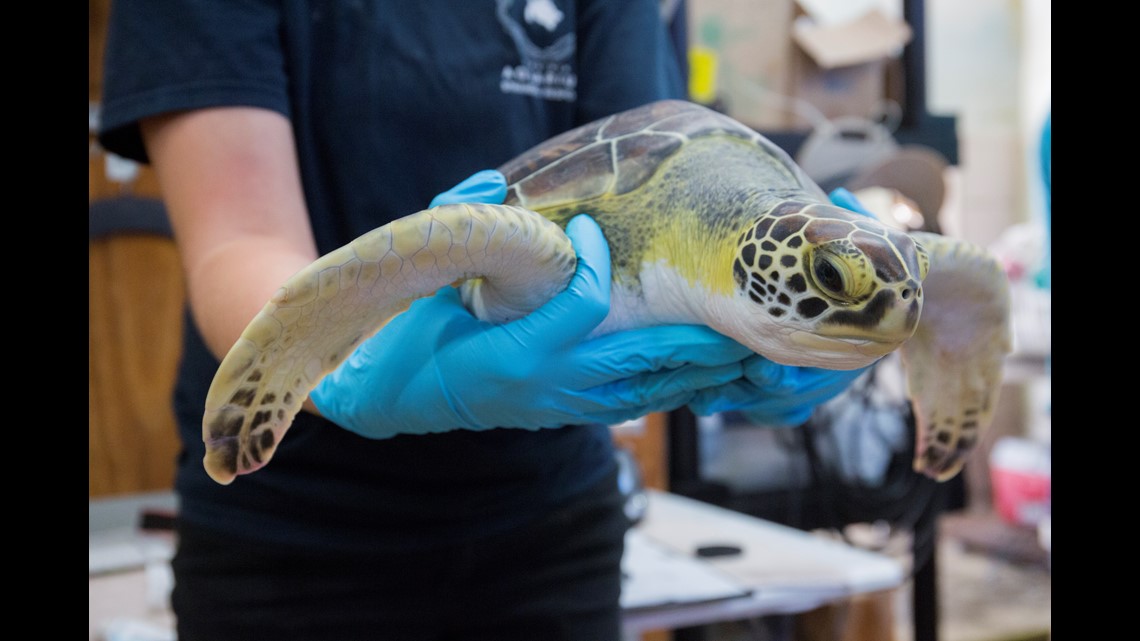
Loggerhead
Loggerhead sea turtles have characteristically large heads with powerful jaws. Adults weigh 170 to 500 lbs. and have a shell up to 45 inches in length, according to Texas Parks and Wildlife.
Loggerheads are capable of living in a variety of environments, such as in brackish waters of coastal lagoons, river mouths, and tropical and temperate waters above 50 degrees Fahrenheit.
In Texas, loggerheads occur primarily in nearshore Gulf of Mexico waters, often in association with offshore oil and gas platforms and natural formations, according to PINS officials.

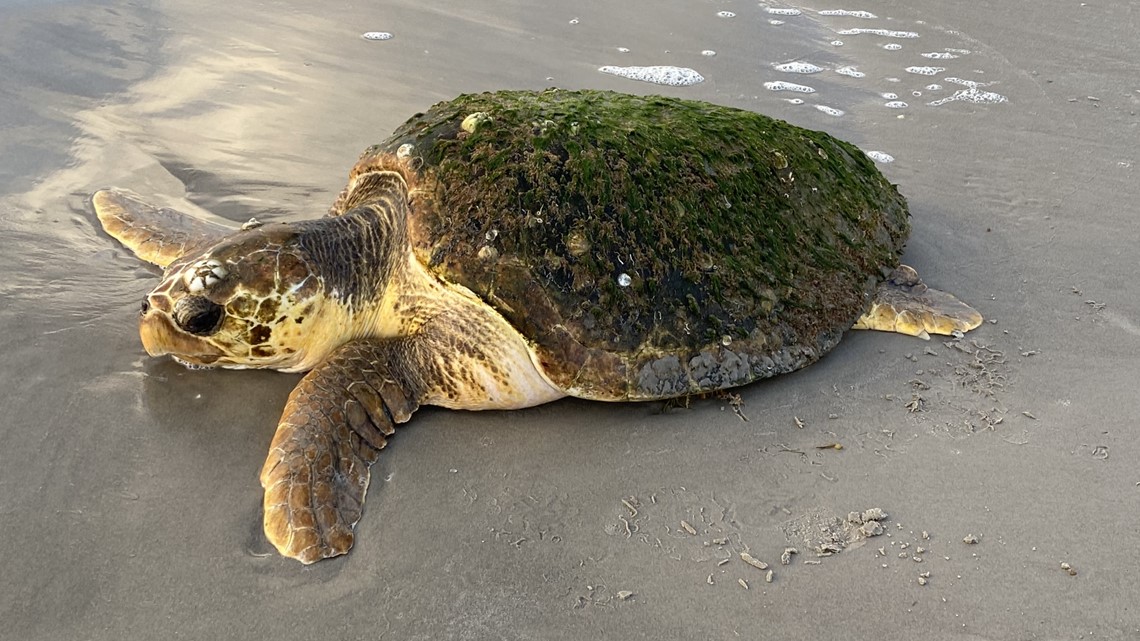
Hawksbill
The hawksbill sea turtle is a small to medium sized turtle with shell lengths up to 36 inches.
"They are known for their beautiful brown shell, mottled with dark and light spots and streaks, which was once commonly used to make tortoiseshell jewelry," according to TPWD.
In Texas, juvenile hawksbills occur in the nearshore waters of the Gulf of Mexico and our local waters within Aransas, Packery, and Mansfield Channel jetties where they feed on sponges and wedge themselves between the jetty rocks for sleeping, according to the PINS.


Leatherback
It is rare to find a leatherback, the biggest of the sea turtles, on the Texas coast, though a few were found recently near Port Aransas.
Adults can be more than 6 feet long and weigh up to 2,000 pounds! PINS officials said leatherbacks are the only sea turtle species without a bony carapace (upper shell). Instead, they have a leathery upper shell.
Leatherbacks prefer deep oceanic waters where they forage primarily on jellyfish. In Texas, they occur in deeper Gulf of Mexico waters and are often reported with blooms of large jellyfish.
Just look at the size of these "gentle giants!"

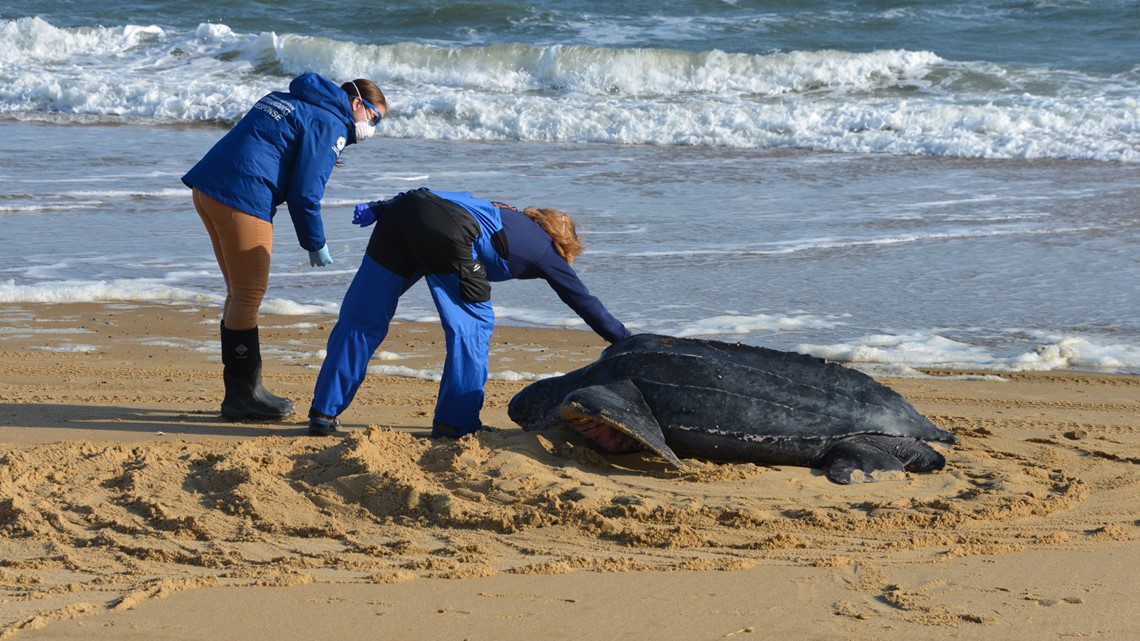

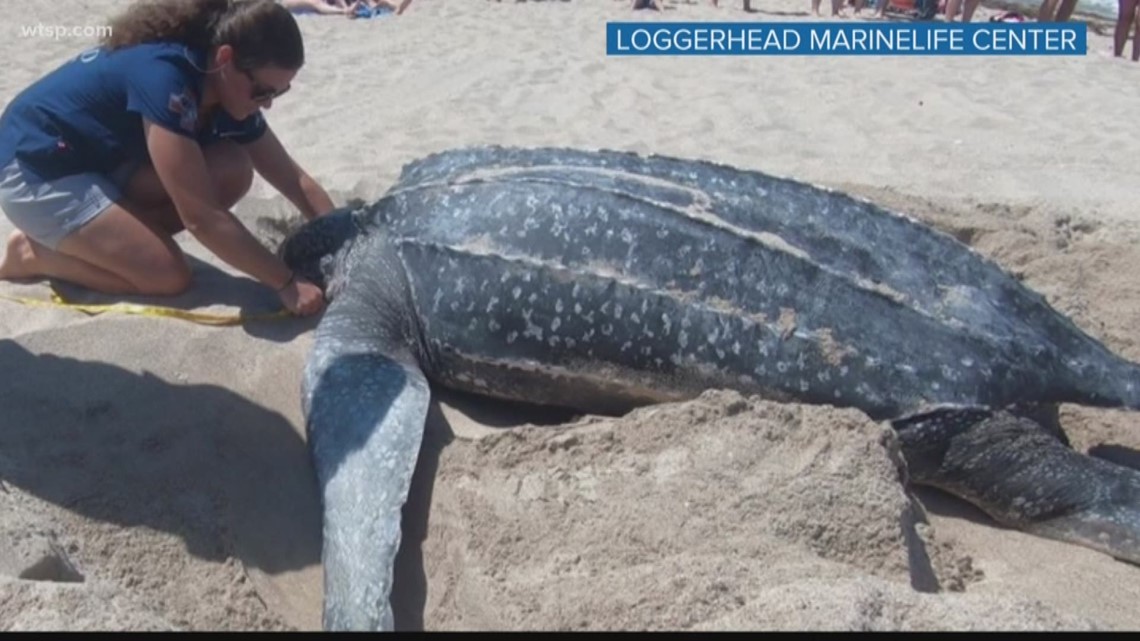

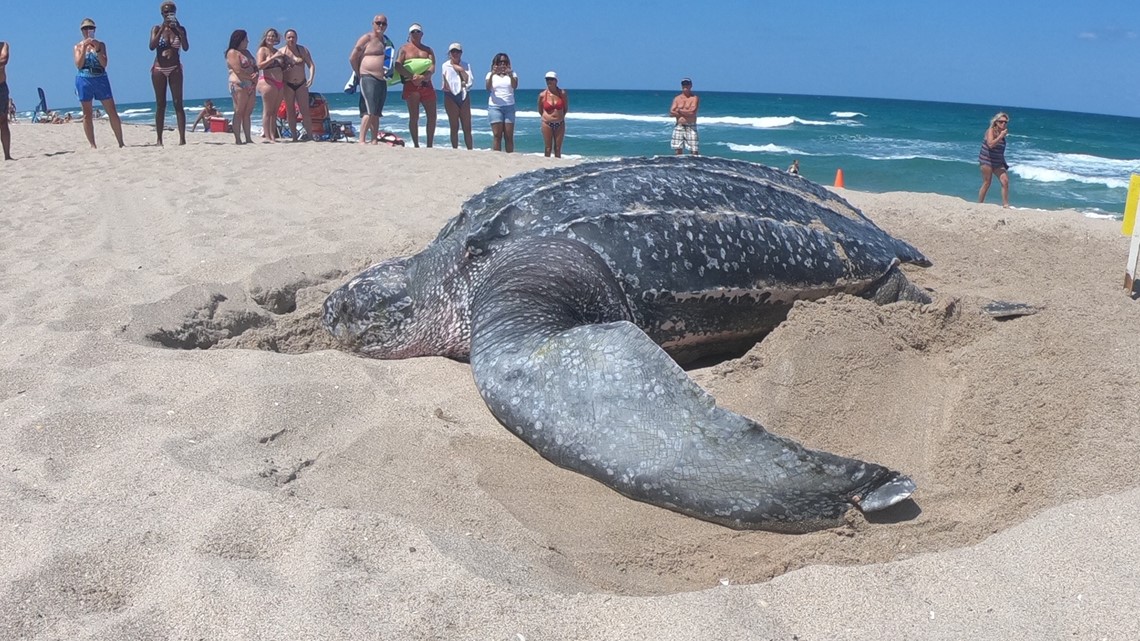
And here is the size of a leatherback compared to all other sea turtles:

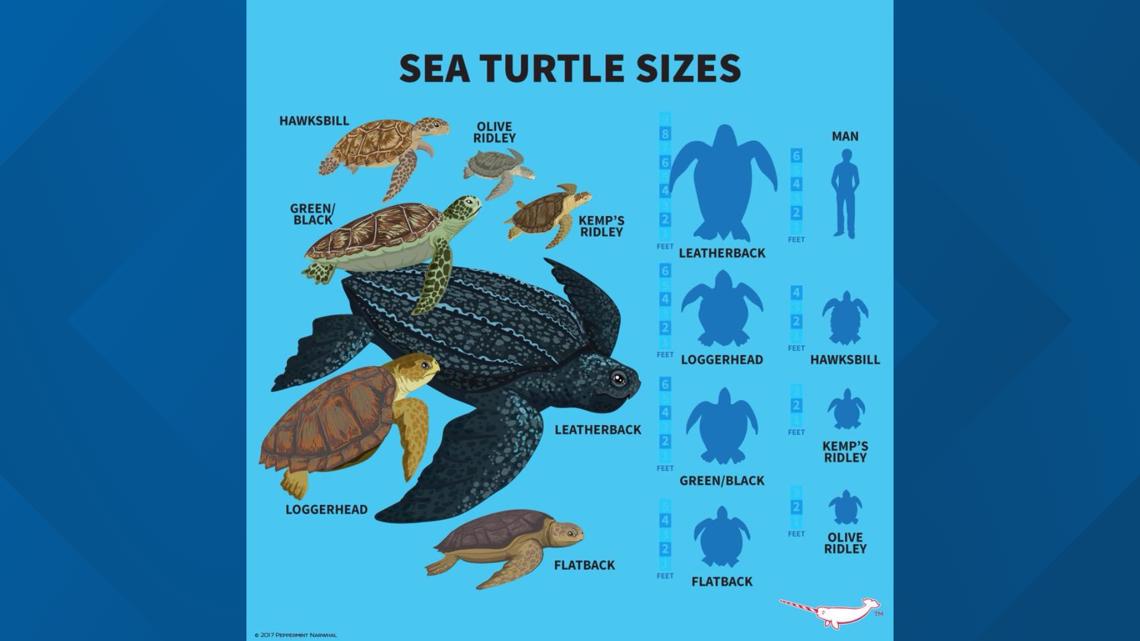
Now, if you ever see a sea turtle on a Texas beach, you can impress your friends by knowing a little something about them. Always keep your distance from the turtles and try not to disturb them if you see them.

